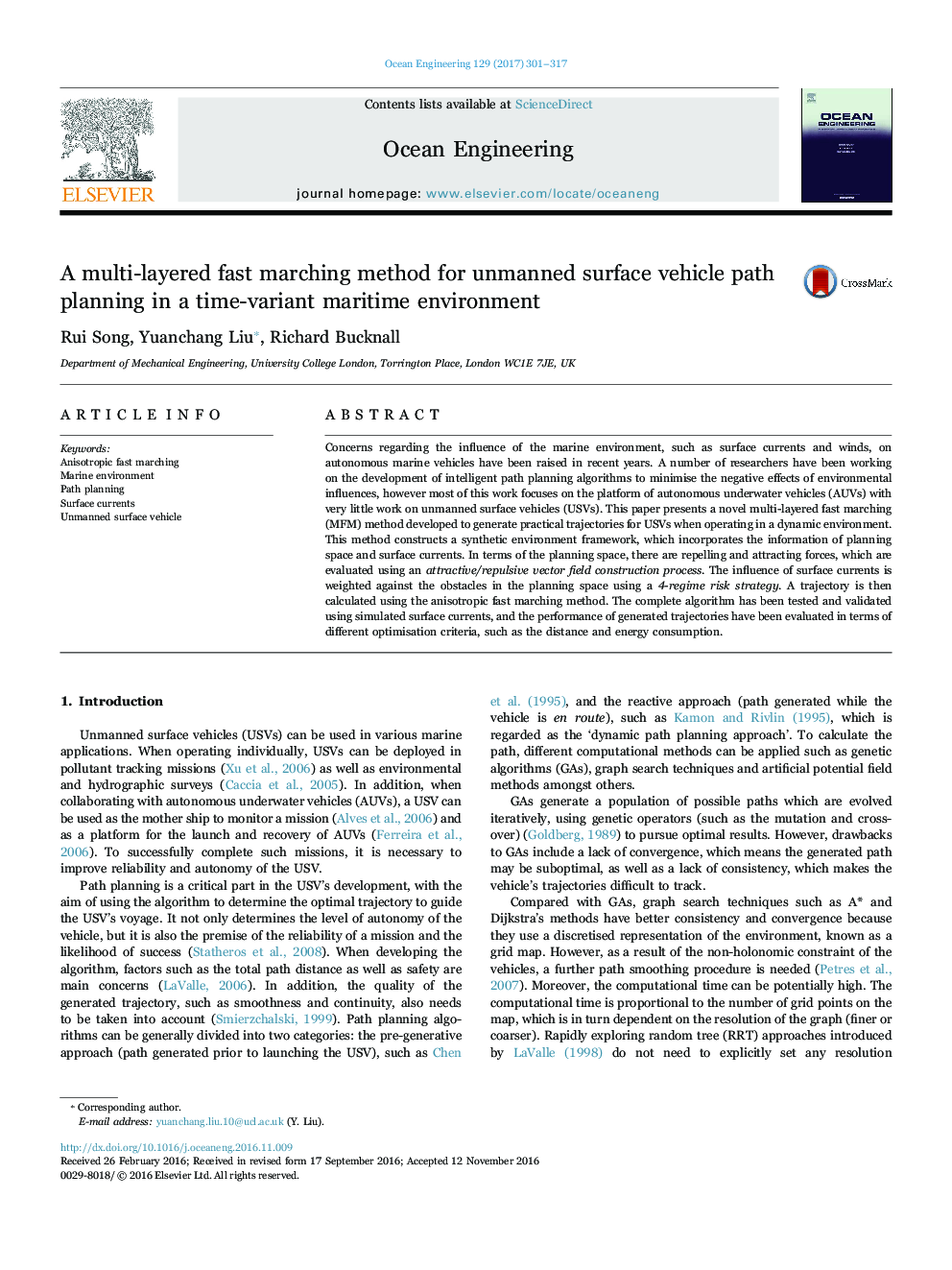| Article ID | Journal | Published Year | Pages | File Type |
|---|---|---|---|---|
| 5474688 | Ocean Engineering | 2017 | 17 Pages |
Abstract
Concerns regarding the influence of the marine environment, such as surface currents and winds, on autonomous marine vehicles have been raised in recent years. A number of researchers have been working on the development of intelligent path planning algorithms to minimise the negative effects of environmental influences, however most of this work focuses on the platform of autonomous underwater vehicles (AUVs) with very little work on unmanned surface vehicles (USVs). This paper presents a novel multi-layered fast marching (MFM) method developed to generate practical trajectories for USVs when operating in a dynamic environment. This method constructs a synthetic environment framework, which incorporates the information of planning space and surface currents. In terms of the planning space, there are repelling and attracting forces, which are evaluated using an attractive/repulsive vector field construction process. The influence of surface currents is weighted against the obstacles in the planning space using a 4-regime risk strategy. A trajectory is then calculated using the anisotropic fast marching method. The complete algorithm has been tested and validated using simulated surface currents, and the performance of generated trajectories have been evaluated in terms of different optimisation criteria, such as the distance and energy consumption.
Related Topics
Physical Sciences and Engineering
Engineering
Ocean Engineering
Authors
Rui Song, Yuanchang Liu, Richard Bucknall,
